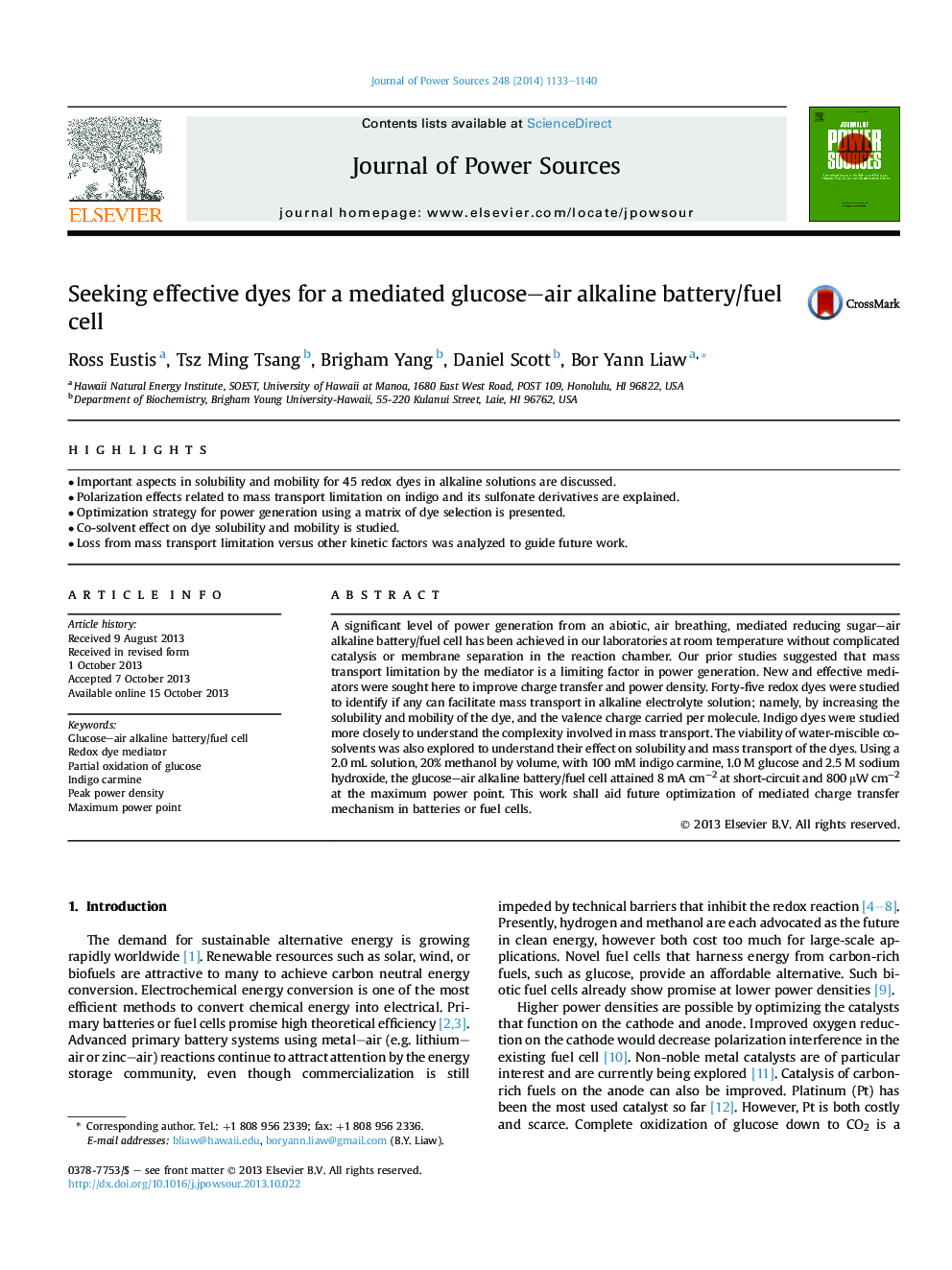| Article ID | Journal | Published Year | Pages | File Type |
|---|---|---|---|---|
| 7738546 | Journal of Power Sources | 2014 | 8 Pages |
Abstract
A significant level of power generation from an abiotic, air breathing, mediated reducing sugar-air alkaline battery/fuel cell has been achieved in our laboratories at room temperature without complicated catalysis or membrane separation in the reaction chamber. Our prior studies suggested that mass transport limitation by the mediator is a limiting factor in power generation. New and effective mediators were sought here to improve charge transfer and power density. Forty-five redox dyes were studied to identify if any can facilitate mass transport in alkaline electrolyte solution; namely, by increasing the solubility and mobility of the dye, and the valence charge carried per molecule. Indigo dyes were studied more closely to understand the complexity involved in mass transport. The viability of water-miscible co-solvents was also explored to understand their effect on solubility and mass transport of the dyes. Using a 2.0 mL solution, 20% methanol by volume, with 100 mM indigo carmine, 1.0 M glucose and 2.5 M sodium hydroxide, the glucose-air alkaline battery/fuel cell attained 8 mA cm-2 at short-circuit and 800 μW cm-2 at the maximum power point. This work shall aid future optimization of mediated charge transfer mechanism in batteries or fuel cells.
Related Topics
Physical Sciences and Engineering
Chemistry
Electrochemistry
Authors
Ross Eustis, Tsz Ming Tsang, Brigham Yang, Daniel Scott, Bor Yann Liaw,
